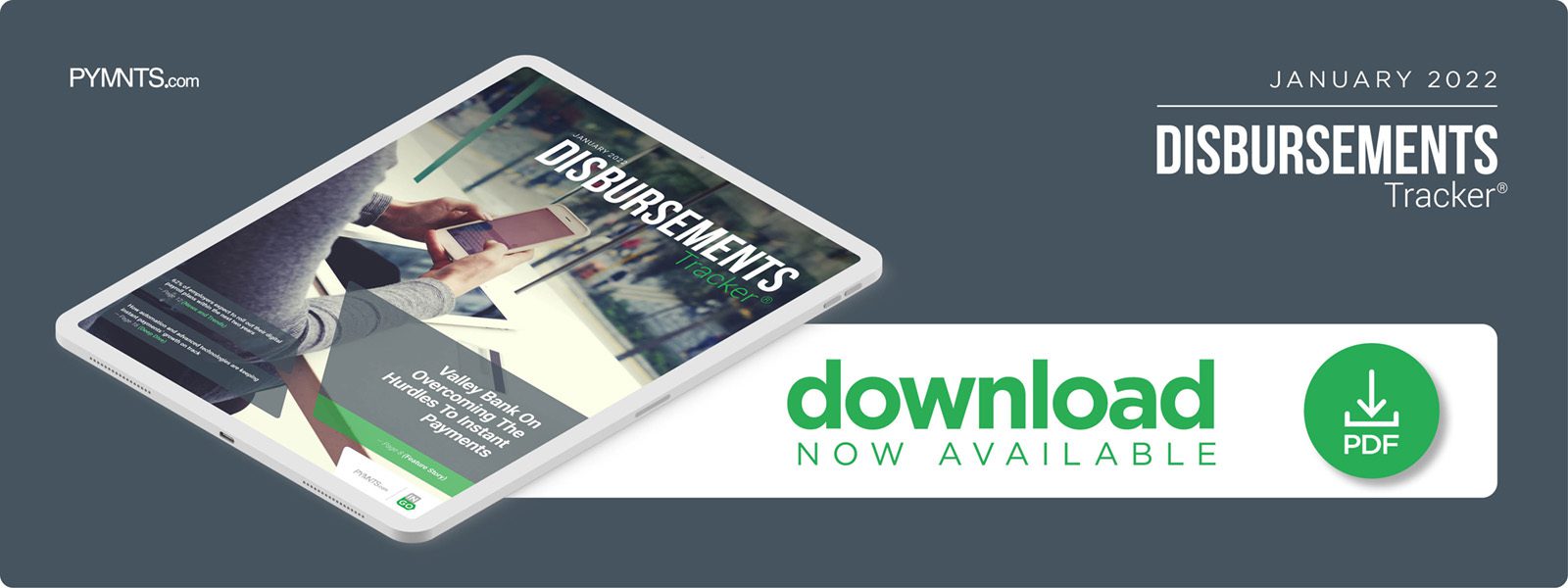Valley Bank on Overcoming the Hurdles to Instant Payments

Interest in instant payments is growing across the U.S. banking sector, but limited infrastructure and a lack of standardization is hindering payment choices and traceability. In the Disbursements Tracker, Valley Bank’s Walt Cox explains why FIs see ISO 20022’s messaging and interoperability standards as key.
The United States is still more dependent on card networks to process quick, accessible payments than other countries, but that is beginning to change. Payors and payees now expect to transact with funds held in eWallets, bank accounts or even blockchain currencies.
“It used to be, ‘Let’s just accept a card,’ and it is no longer that way. And it is [going to be] a frightening new world in the next five to 10 years,” Walt Cox, first vice president of payments at Valley Bank, told PYMNTS in a recent interview.
Individuals and businesses want choice in where and when they receive money, but payors face a tall order in meeting those expectations in the U.S. Financial institutions (FIs) will have to overcome significant hurdles to make it happen.
Paying in Real Time
U.S. banking lags behind other industries in implementing technology platforms that report payment status in real time, remaining reliant on inefficient, manual interventions that add costs.
“The end game is users driving how payments get routed,” Cox said. “I think, unfortunately, it’s largely been driven by the infrastructure we find ourselves within. So, if you’re in the U.S., you’ve got to pay the way the U.S. pays. If you’re in Brazil and you’re using Pix, and you can do it in real time, it’s amazing and it’s low cost.”
Orlando Santos, Valley Bank’s senior vice president and director of treasury products, said the key to instant payments’ future is standardization, such as ISO 20022, the international standard that describes a common platform for development of messages.
Integration into enterprise resource planning (ERP) software using a common language that facilitates payment choice and traceability is essential.
“SWIFT will be on ISO next year; we already have The Clearing House on ISO and ERP systems are looking at ISO as the standard,” Santos said. “I don’t know if folks really understand what ISO can do, but I’ll summarize my view this way: Do I think businesses are interested in faster payments? Yes. Do I think businesses are more interested in the associated data that comes with [instant] payments? Yes.
“I think that’s where ISO can help, not only from a monetary perspective but [also] from a remittance and information perspective, because the wealth of information that is lacking today is essentially a problem that ISO solves, and it’s a global scheme that you can use in various market infrastructures.”
Under Pressure to Make Instant Payments Better
In the past, whether payments were business-to-consumer (B2C), payroll for gig workers or insurance payouts, people had to wait for checks, Santos said. Now, payments are commonly expedited, but the variety of instant payments platforms complicates the situation.
“If I’m getting a disbursement from my insurance company, and they’ve signed up for Zelle — well, I’m not on Zelle. My bank is not on Zelle, [so] maybe I want it on my Venmo account,” Santos said. “So that’s some of the challenge, and everybody’s got a solution.”
The lack of interoperability among those solutions underserves both payors and payees, Santos said. In contrast, European payors can make instant payments to practically anyone from an ATM. They just need the recipient’s international bank account number (IBAN).
An IBAN permits funds to be sent but not withdrawn, however. Making instant payments work requires more than standardization of how fund are exchanged and could warrant a complete rethinking of how identity is handled in the U.S.
Identifying the Problem With Identities
With nearly 10,000 FIs, private and public sector networks and no mandate, the U.S. is more than a decade behind other markets such as the United Kingdom in implementing instant payments, Santos said.
The most significant obstacle is ensuring the identity of payees, and artificial intelligence (AI) can help ensure recipients are who they say they are. Currently, senders hold all the liability. That could shift with standardization and improvements in how identity is handled, but AI can still help track and sort identity data.
“And that’s all the different data points — not just facial recognition, or biorecognition, or heart rate or pulse,” Santos said. “It’s, ‘What are the things that define Walt?’ as far as, ‘Does Walt have a unique ID that I can send money to?’ That’s a part of an identity scheme that would allow payment routing to happen a lot better than it does today.”
Even the lack of a national standard for identification, such as state-issued driver’s licenses, has added hurdles to instant payments’ implementation, Cox said. Legislators do not understand the importance of identification standards for financial services, he said, which leaves FIs to try to decide how identity is handled.
Fixing that will take a concerted effort, involving legislators, FIs and even third-party processors, though the ultimate solutions will require legislation. Until then, FIs are left cleaning up and adjudicating identity standards that have nothing to do with payment infrastructure, Cox said, and it does not have to be that way.
